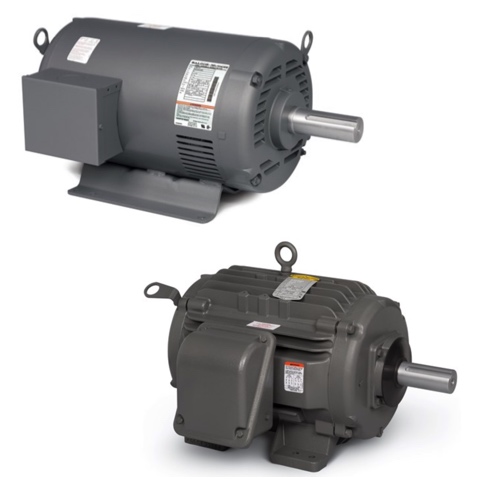HVAC Motors

The HVAC industry relies heavily on the electric motors used in its equipment. These include the fractional horsepower electric motors used in small fans and pumps within an HVAC system, as well as large three-phase industrial electric motors for air-conditioning compressors. When any of this equipment is operating under design conditions, it is of prime importance that the motors driving the equipment be performing at their best.
HVAC motors power the compressors in air conditioning systems, which are prevalent in HVAC applications. When it comes to the cooling side of things, it's the motors that drive the system. How are motors involved in cooling the system? The compressor is the main component that circulates the refrigerant throughout the system. And for the system to do that, the compressor must have the necessary horsepower and must also operate at the necessary amperage.
Another HVAC application that uses motors is pumps. Many HVAC system designs, especially those in large buildings, call for pumps to move chilled water, hot water, or another fluid around the building for either the heating or the cooling that building need. When the pump system is in a high energy use mode (such as peak building occupancy times), the variable-speed motor of the pump actually has to let the pump slow down.
FAQs
What types of HVAC replacement motors can service technicians purchase for moving cool air produced by air conditioners?
Types of HVAC replacement motors available for moving cool air produced by air conditioners include blower motors, condenser fan motors, ECM motors and shaded pole motors.
Are HVAC motors a cost effective choice for increasing the performance of furnaces?
Yes, HVAC motors are a cost-effective choice for increasing the performance of furnaces, as they enhance energy efficiency, airflow control, and reliability, leading to lower operational costs and improved heating efficiency.
Motor Starters, Soft Starters and VFDs
Motor Starters
Motor starters safely start and stop a motor in industrial applications. They are designed with a contactor, overload and circuit protection. They are used when basic motor control is required, where torque on the motor is not a concern and speed control is not needed. The advantages of motor starters include: lower cost, allows for remote operation, allows for monitoring of motor state (with the use of auxiliary contacts) and they are safe and efficient. The disadvantages include: high inrush current that can cause fuses to blow and breakers to trip if the inrush is too high, and the starter will allow a full torque to start the motor which can cause the motor to ramp up to full speed very quickly potentially causing the motor to wear and degrade prematurely.
Soft Starters
Soft starters protect motors from inrush current by gently ramping up the motor to full speed. They provide all of the same functions as a traditional motor starter. The advantages of soft starters include: they are less expensive than a VFD when only startup control is needed, they are a smaller system than a VFD where space is a concern and they prevent unwanted torque upon startup, prolonging the life of the motor. The disadvantages include: they are more expensive than a traditional motor starter and they do not allow for full speed control.
VFDs
A Variable Frequency Drive (VFD) allows for the slow ramp up of a motor during startup and the slowing down of the motor during shutdown. It also allows for full speed control during the entire run cycle of the motor. VFDs provide the same functions as both the traditional motor starters and soft starters. The advantages of VFDs include: full speed control (start, stop and in-between), more custom control and monitoring, energy savings due to efficient motor usage and less wear and tear on the motors. The disadvantages include: they are more expensive and larger than other motor control options and they generate heat that may require fans or AC units.

